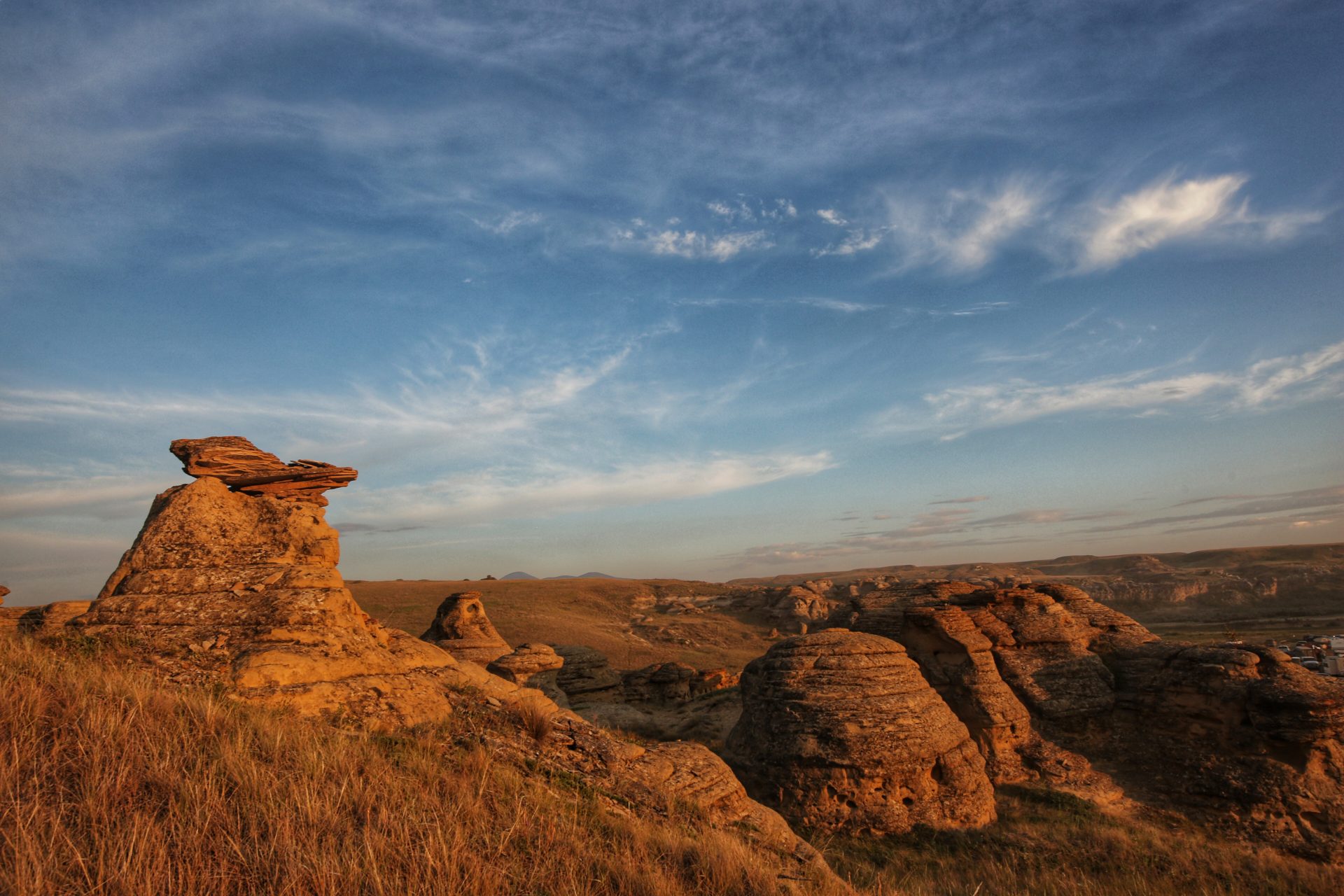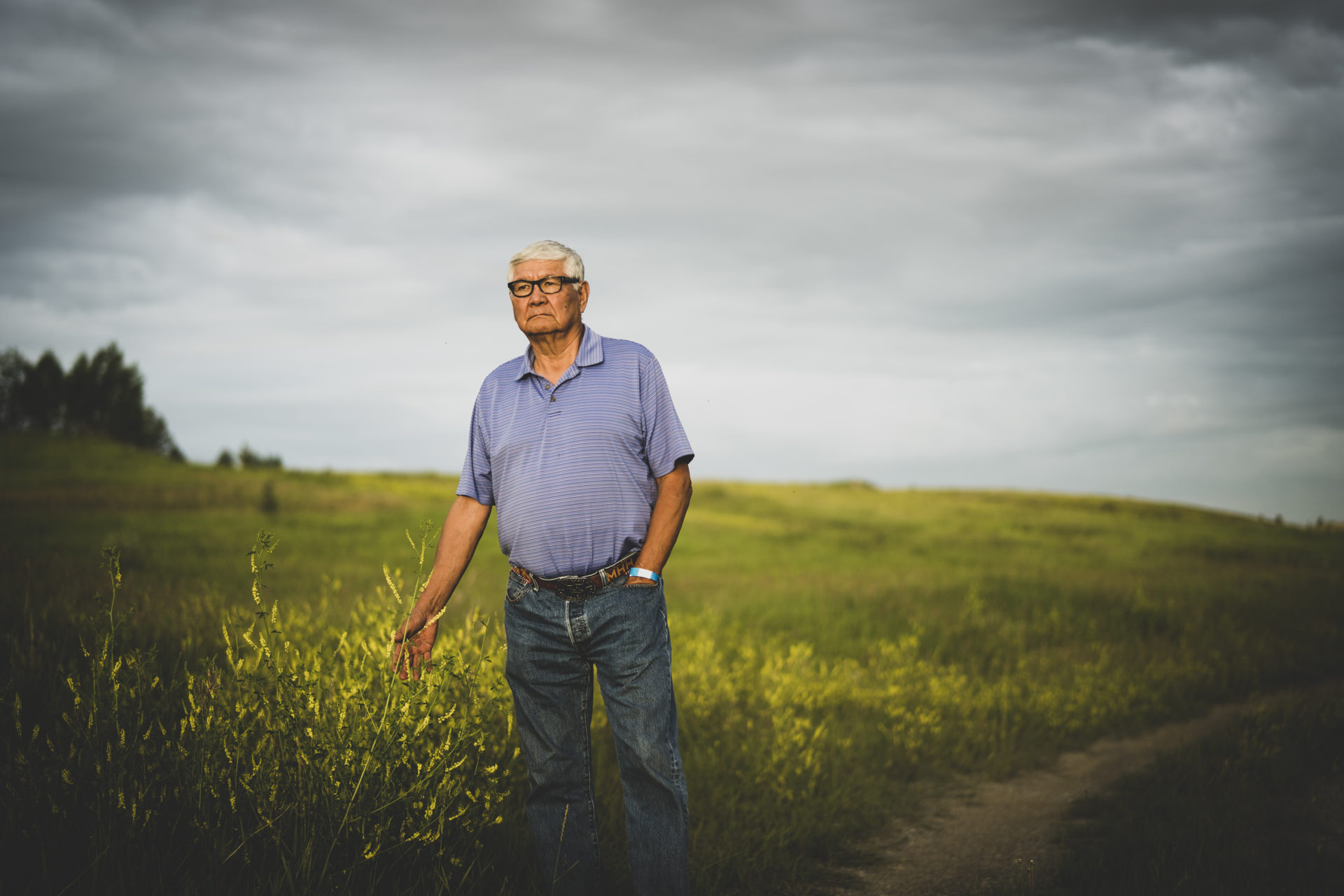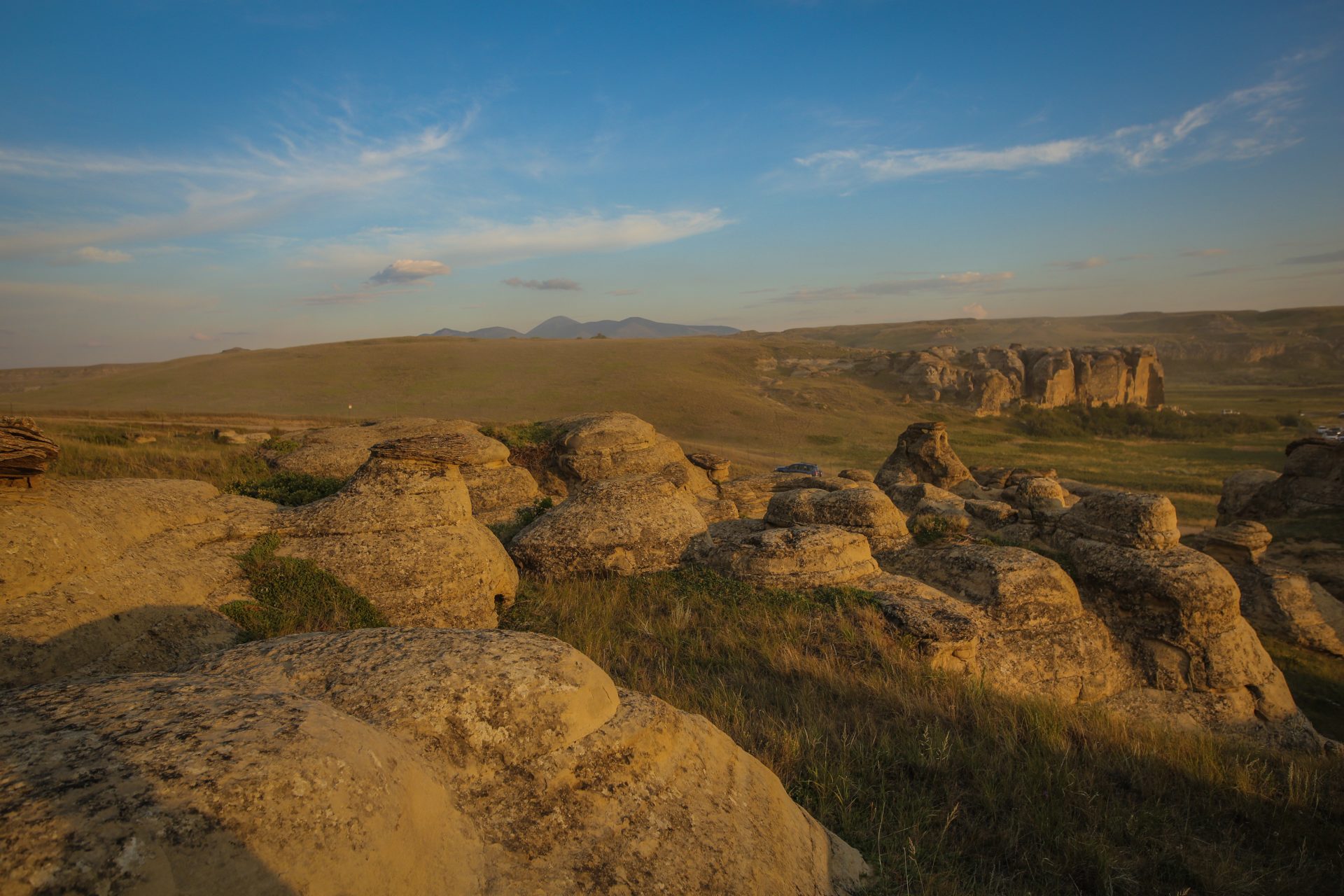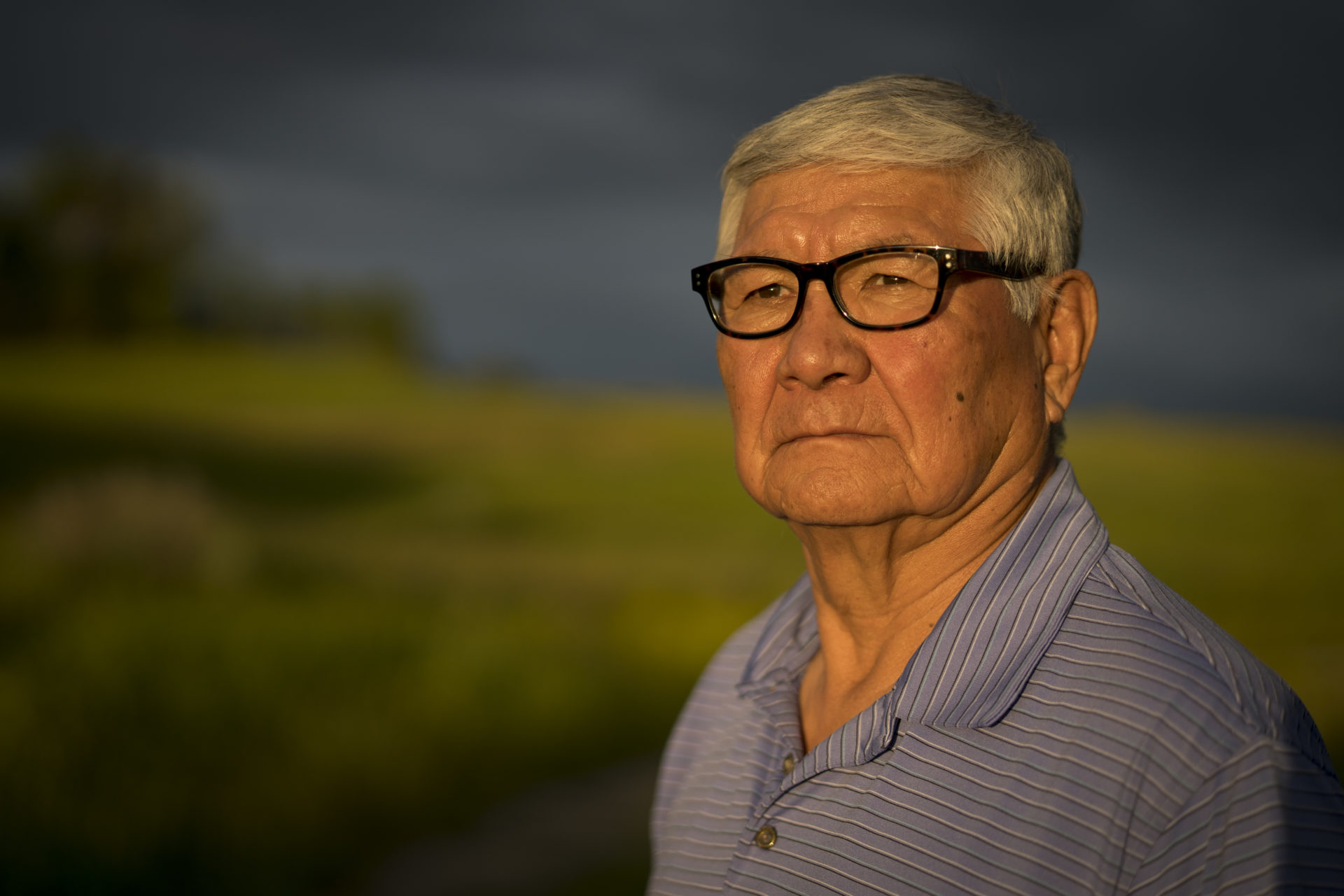
17 government inspectors, 170 companies and more than 9,000 potential infractions: inside B.C.’s oversight of the oil and gas sector
Notes made by regulator officers during thousands of inspections that were marked in compliance with...
Martin Heavy Head’s grandfathers never went to Áísínai’pi, the area also known as Writing-on-Stone — a stretch of coulees and cottonwoods that straddles the Milk River in southern Alberta.
They didn’t go because they probably wouldn’t have been allowed.
At that time, Indigenous people were forced to apply for permission from the Canadian government if they wanted to leave the reserves they lived on.
“Since the start of reservation days, we were by law more or less confined to our reserves,” Heavy Head, 67, says. “They would have had to get a pass … I don’t even know if the Indian agent would have granted it.”
Visiting a sacred site, he says, was likely not considered by the government to be a valid reason to leave the reserve.
But even though they had never seen it, they still knew about it. Stories about Áísínai’pi had been passed down from generation to generation.
Eventually, those stories were told to Heavy Head.

The Government of Alberta says that the Indigenous artworks found on rocks in the park are “the most significant concentration of protected First Nations petroglyphs (rock carvings) and pictographs (rock paintings) on the Great Plains of North America.” Photo: Leah Hennel
Heavy Head was born on the Blood Reserve, at Dead Man’s Corner, where the Great Plains stretch to the horizon, and where the Rocky Mountains can just be seen jutting out into the sky, a fringe on a vast landscape.
He’s a member of the Kainai Nation (Blood Tribe) of the Blackfoot Confederacy, which has a huge traditional territory.
“Blackfoot territory extends from the eastern slope of the Rockies to the east to the Manitoba border, from the North Saskatchewan river in the north down to the Yellowstone River in Wyoming,” he says.
“Writing-on-Stone is in the centre of it,” he tells me. “Writing-on-Stone has been a sacred site since time immemorial.”
He grew up hearing stories about the petroglyphs to the east of his home — about how travellers would stop to look at the paintings and on the stones. If they saw good pictures, Heavy Head says, they would keep going. If they saw bad ones, they might turn back. It was a bad omen.
These stories filled Heavy Head’s mind as a young person, but he also didn’t visit the area until middle age.
He was taken away to St. Mary’s residential school as a child. “We lived about five miles away, but it could have been 1,000.”
“I was never at Writing-on-Stone until I was about 42,” he says, “but I knew all about it.”
“Our grandfathers told us all there was to know about Writing-on-Stone,” Heavy Head says. “Everything had already been explained to me.”
It was stories like these that formed the basis of the recent designation of the area as a World Heritage site, which for Heavy Head is a form of repatriation of sorts.

“Our grandfathers told us all there was to know about Writing-on-Stone,” Heavy Head says. Photo: Chris Bolin / The Narwhal
The world heritage committee of the United Nations Educational, Scientific and Cultural Organization (UNESCO) met for the 43rd time last week in Baku, Azerbaijan. They had a lot to talk about: the status of current World Heritage sites and those in danger of losing their status due to degradation or environmental threats, such as Wood Buffalo National Park in Alberta’s northeast corner.
And they had a few announcements to make. Among them, the addition of Alberta’s newest World Heritage site — the 1,106-hectare area around Writing-on-Stone Provincial Park.
There are ten possible criteria that can form the basis of a World Heritage site’s selection.
In Azerbaijan, it was announced that Áísínai’pi had been selected on the basis that it ”bear[s] a unique or at least exceptional testimony to a cultural tradition or to a civilization which is living or which has disappeared.”
Writing-on-Stone — or Áísínai’pi, it is pictured or written, in the Blackfoot language — is now Alberta’s newest World Heritage site, joining the ranks of national parks like Wood Buffalo, Waterton, Jasper and Banff (which are jointly named as part of the Rocky Mountain national parks), as well as Dinosaur Provincial Park and Head Smashed-In Buffalo Jump.
It’s a provincial park, and was also dubbed Áísínai’pi National Historic Site in 2004. It is now the first World Heritage site to be designated in Alberta in nearly 25 years.
Upon the announcement of the designation, Jason Nixon, Minister of Environment and Parks, said in a statement that the area is “a testament to the remarkable ingenuity and creativity of the Blackfoot people.”

Writing-on-Stone / Áísínai’pi is now the first World Heritage site to be designated in Alberta in nearly 25 years. Photo: Leah Hennel
The Government of Alberta says that the Indigenous artworks found on rocks in the park are “the most significant concentration of protected First Nations petroglyphs (rock carvings) and pictographs (rock paintings) on the Great Plains of North America.”
According to UNESCO, the archaeological remains on site have been dated back to as early as 1800 BC and range up to the beginning of the post-contact period.
Heavy Head, now a council member with the Blood Tribe, was in Azerbaijan, too. He was the only representative of the Blackfoot people to travel to the meetings at the invitation of Parks Canada.
He first became involved in the application for Áísínai’pi to become a World Heritage site more than 20 years ago.
His friends and colleagues who were also involved — Adam Delaney, Pete Standing Alone, Frank Weasel Head, Narcisse Blood and Alan Pard — have all passed away before seeing their vision come to fruition.
“It’s bittersweet,” he says. “These people were my friends. They passed away early.”
For Heavy Head, the designation wasn’t a surprise. He knew the area was important, and he always knew it would eventually get the attention it deserved.
Twenty-two years later, it finally did. And he was there to see it.
“Today it’s a reality,” he says. “We always knew that it would be.”

“When we talk about repatriation, we’re not just repatriating our stuff from the museums,” Heavy Head says. Photo: Chris Bolin / The Narwhal
Heavy Head first became a part of the World Heritage site application through his work with the Mookaakin Cultural and Heritage Society. The society was working on “repatriating our stuff,” Heavy Head says, spurred on by the passing of the American Native American Graves Protection and Repatriation Act in 1990.
At first the group was focused on the repatriation of bundles and pipes and other important cultural objects that had been put on display in museums.
But it became bigger than “stuff,” though those cultural objects are now important parts of Blackfoot ceremonies in the community — a “living museum,” rather than one where people pay admission just to look.
“When we talk about repatriation, we’re not just repatriating our stuff from the museums,” Heavy Head says. “We’re repatriating our language, our history, our land, our sacred sites.”
Part of repatriation, too, is psychological, he says — reclaiming culture that residential schools tried to erase.
Eventually, the society turned part of its focus to getting Writing-on-Stone recognized for its importance to the Blackfoot people, alongside staff from Alberta’s provincial parks.
“It’s a repatriation of the site,” Heavy Head says of the new designation.
And as for the repatriation of Blackfoot culture overall, he says, “it’s a first step.”
Get the inside scoop on The Narwhal’s environment and climate reporting by signing up for our free newsletter. On March 17, federal Conservative Leader Pierre Poilievre...
Continue reading
Notes made by regulator officers during thousands of inspections that were marked in compliance with...

Racing against time, dwindling habitat and warming waters, scientists are trying to give this little-known...

From investigative reporting to stunning photography, we’ve been recognized with four 2024 CAJ Awards nods...
